Flood in Northwest Bangladesh
Written by Antje on September 5th 2017 14:40
In my last blog, I wrote that the rainy season is in full swing here. On that day, I took the pictures below of the planting of the rice. I couldn’t know yet then that it would rain for 2 days without interruption, raining as much in two days as it would normally rain in the entire month!
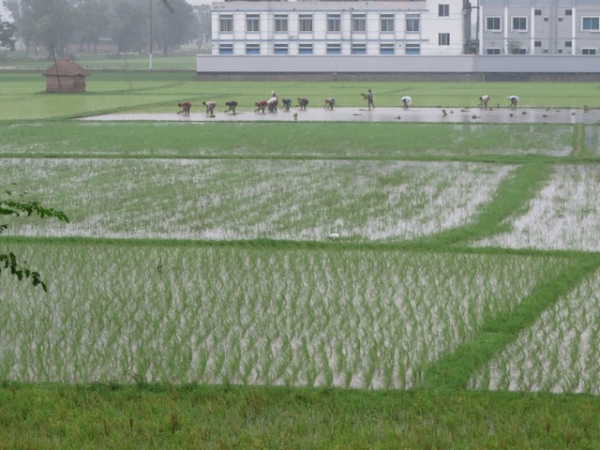
At the end of that rain, my view was this:
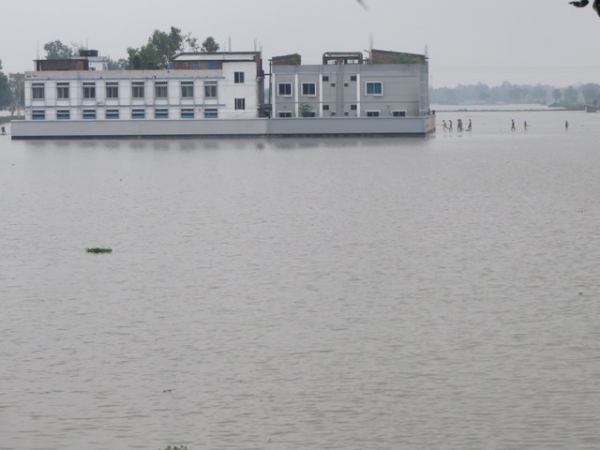
There was also water on our property, but with limited damage. In several locations, water threatened to enter the houses, but for us the rain stopped just in time. Unfortunately, a few snakes entered the houses!
In the immediate surroundings of the hospital, the damage was limited. In the past 2 weeks, the water resided sufficiently so that they could plant the rice anew. A portion of the recently planted rice had died, but part of it survived. People try to plant anew in the fields where most plants have died. Unfortunately, these plants are now more expensive because of the increased demand.
A little further away from the hospital, the rain and floods have caused more damage. In the provincial capital of Dinajpur, a dike broke through and part of the city was flooded. Also, part of a railway track on a dike between our town of Parbatipur and Dinajpur have been washed away, with the result below. The trains that I hear very clearly through my bedroom window will not ride for two weeks. To my amazement, it only took 2 weeks to repair the tracks, so this week, the trains are riding again.
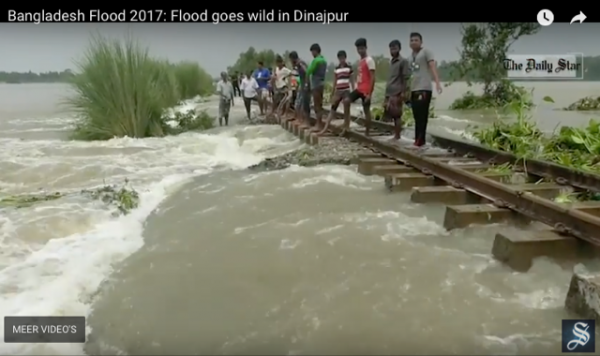
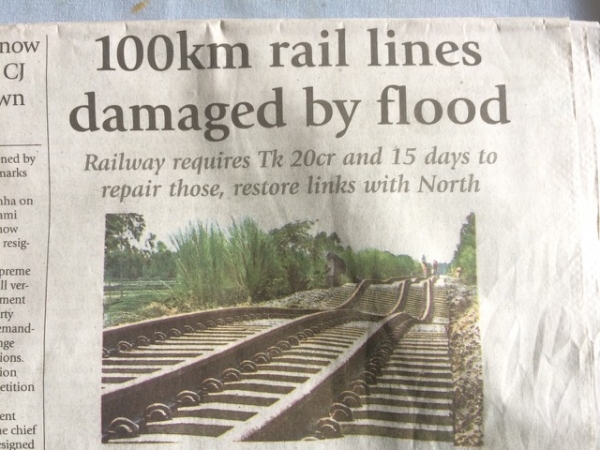
Below are some pictures from the news of the floods. On this map, I have indicated about where we are amidst all these floods:
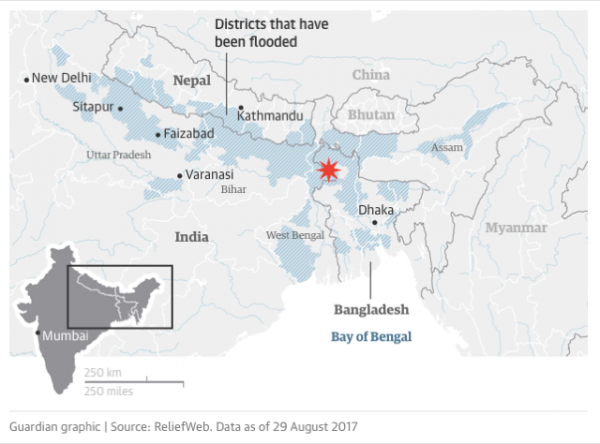
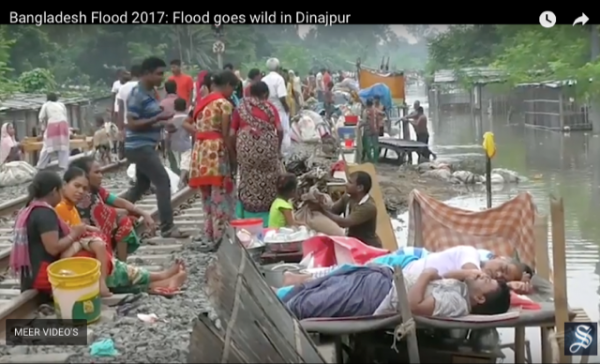


An additional problem in our region is that traditionally, houses are build form clay. These homes cannot sit in water for very long, so they collapse (I don’t have any picture of this). It’s always the poorer people who live in the lower areas and who have the worst houses, who are hardest hit by these floods.
Our project has been asked to cooperate with UNFPA (United Unations Populations Fund) for emergency relief help. This is not in our immediate surroundings, but in the larger working area of our community health and development department. We have local staff on location that can help to ensure that the help reaches those who need the help most. Relief aid will consist of food supplies, help with mobile stoves, and a number of health clinics.
This week, we had an evening to make emergency packages, which include soap, disinfectant and a blanket. We also made packages with rice, lentils, oil and salt. The picture below didn’t turn out very well, but the show volunteers making these packages. That will take place several more times in the next few weeks.
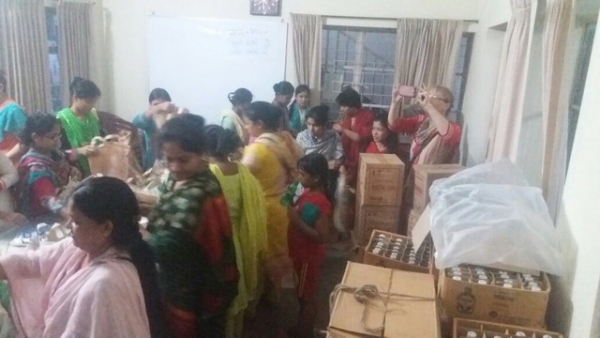
The hallway in which we filled bags with rice and lentils:
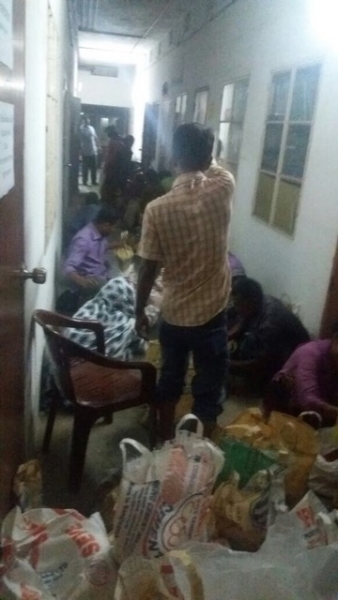
In summary, personally I suffer no further consequences of the floods, but in the wider area these are certainly very noticeable. On the other hand, the country is getting ready for the Eid Festival (Muslim sacrifice feast). Cows and goats are sold everywhere, and made ready for the sacrifice ritual tomorrow. Busses and trains over overflowing with travelers, leaving the cities to go to their villages.
Concerning my work: yesterday we had a visit of the Civil Surgeon, the highest health authority in our district, to inspect us for our hospital license. We have a new Civil Surgeon, and he was very positive about what he saw, so we hope to get the license again for another year.
Below you can watch the video of which a few screen shots were taken.

